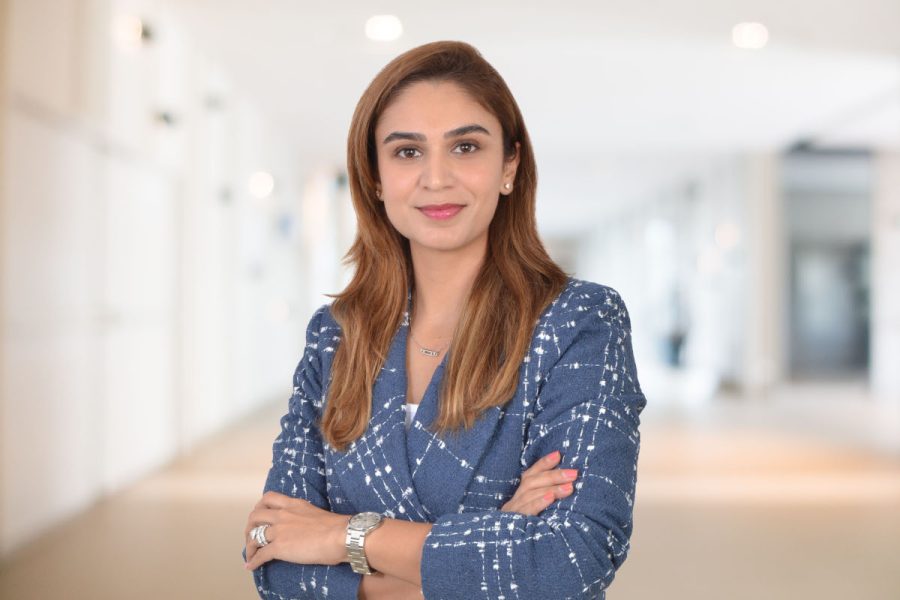This article was originally posted on Hubbis.com
Zurich-based additiv has been a recognized innovator of digital wealth management solutions since their creation in 1998. The firm has since become a leading provider in the field of digitalization for wealth managers and now has clients across the globe. To support, additiv has offices in Switzerland, Germany, Singapore and Kenya as well as development centres in Romania, and the Ukraine. Hubbis met up recently with additiv’s CEO and founder, Michael Stemmle, along with his established team focused on supporting the APAC region. We discussed what the Asian wealth market means for additiv, the future of the mass affluent wealth management market within the region, and the importance of scalable technology to leverage ecosystem opportunities.
“Supporting the wealth community within Asia is a priority for us at additiv”
Michael Stemmle, Founder and CEO of additiv, explains. additiv already has a strong reputation at home in Europe for helping leading financial institutions to capitalise on digitisation and there is a real opportunity to support the wealth market here in Asia, the firm elucidates.
“In fact, we have more than tripled our team within the region over the last two years to accommodate this need, as well as to service our growing client base. And we are now preparing for a key push into Indonesia, the Philippines and beyond,”
says Stemmle.
Reviewing Asia’s vast potential
Stemmle and the team believes that Asia Pacific’s immense opportunity comes mainly from its fast-growing middle-class population. With a high proportion living longer, there is a far greater need for careful financial planning and, in turn, a greater level of accumulated assets. In fact, prior to COVID-19, the number of the mass affluent in Southeast Asia alone was set to double in the next 10 years to more than 140 million people.
The opportunity within the region in general presents a mouth-watering pool of new consumers for all industry sectors. People graduate from the mass market; from say having a scooter to a car, ensuring that they purchase the newest smartphone models, and buying luxury goods and services. Additionally, these new-to-wealth personas offer a variety of new characteristics in terms of their behaviour. The large majority are digital natives that spend a lot more time in front of a PC, laptop, tablet or smartphone. Many are reasonably, or well-educated urban professionals, are mostly millennials, and many may be small business owners. They very often choose between personal consumption and saving to achieve financial goals. This newer segment, of mostly digital natives, needs financial education and guidance in the form of engaging and intuitive apps, in order to encourage more financial planning type activity.
And additiv is well suited to serve this market, as Stemmle explains.
“Our solutions are designed with our clients and their clients’ needs in mind. Whether it be to support the very rich who need highly sophisticated solutions, right down to the mass affluent and indeed to anyone who can save money each month for their futures, our clients gain real value. The pure joy of digitalisation is that it achieves both better service and lower cost across all segments of wealth.”
Supporting the needs of differing key Asian markets
Stemmle explains that the initial core markets that additiv identified as offering the best potential are Indonesia and the Philippines, and that the firm then plans to head to Thailand and Vietnam.
additiv’s interest in Indonesia is no real surprise. The firm’s Head of Product for Asia Pacific, Reto Wolf, recently highlighted that, in Indonesia, where the mass affluent last year made up just under 10% of the population, it is estimated the market will grow to 21% over the course of the next 10 years.
This is perhaps down to Indonesia being the largest and fastest-growing internet economy in Southeast Asia. Doubling year after year for the past five years, this has been driven largely by travel, media, ride/taxi-hailing and payments. And the opportunity for loans, wealth, investments and insurance products is all catching up fast.
Stemmle goes on to highlight that this opportunity, coupled with the need for truly digital solutions within the region, is why Victor Wongsonegoro recently joined the additiv team. Wongsonegoro, who joined from Saxo Bank, has become Head of Sales for Asia Pacific at additiv, as Stemmle explains, “Victor joining additiv is a major coup for us. His arrival is part of our major investment in talent within the region, especially with regards to Indonesia, where Victor is from originally.”
Growing from a strong base in Singapore
This dedication to the region is built upon an already strong presence in Singapore. Dario Bernasconi, Managing Director within Asia Pacific at additiv, highlighted that “big clients in Singapore and beyond see that we are both trustworthy and reliable, with a full and expanding team in Singapore to support our operations in the region.”
“Here in Singapore,” he elaborates, “we offer full capability, including sales and pre-sales, as well as proximity to our customers for implementation issues. We are able to deliver project managers, and UX/UI resources so that we can fully conceive our customers’ needs here out of Singapore, as well as also partially develop the software locally. And our business model has been designed so that we will replicate and extend our operations across the region, using Singapore as a blueprint and working alongside a major implementation and sales partner in the form of Thakral One.”
Thakral One, also headquartered in Singapore, is a technology consulting and services company focused on core business applications, banking solutions, digital technologies and data analytics. Importantly, the firm does not own its own software but instead focuses on building consulting and delivery capabilities around leading global technologies. Thakral One was founded in 1997, and its footprint now covers 15 markets across Asia Pacific and the Middle East. “Accordingly, through the partnership we have significantly boosted our overall presence and capability in Asia Pacific,” Bernasconi reports.
Powering Australia’s largest bank’s award-winning wealth app in Indonesia
additiv’s strong position within the region is further reinforced by one of their recent ‘home runs’. Bert-Jan van Essen, Head of Business Development at additiv, reports that the most important and significant case relates to PT Bank Commonwealth (PTBC), the Indonesian subsidiary of Commonwealth Bank of Australia (CBA), who use additiv to power their award-winning wealth app.
“In today’s digital world, investors increasingly demand the ability to stay abreast of market developments and to manage their financial assets from their mobile devices. However, most financial institutions struggle with delivering this experience as they are tied up in a maze of legacy systems and disjointed service channels. PTBC recognized this challenge early on and entrusted the delivery of the platform for its mobile ‘SmartWealth’ service to us.”
van Essen explains.
The app is widely seen as a game-changer in the industry, providing the bank’s ‘Premier’ clients with a 360-degree view of their investment holdings, bank accounts and bancassurance policies. It also displays relevant financial news, robo advisor-like investment recommendations and the ability to stay in touch with their advisors. additiv’s technology provided the functionality and flexibility to do this with minimal impact on the bank’s legacy systems. For Stemmle, and his team at additiv, this important milestone achievement demonstrates the strength of its cloud based DFS platform, the technology underpinning SmartWealth.
Providing the apple, not the core
additiv’s positive reception within Asia isn’t just down to a growing market opportunity. It comes from the fact that, as well as being in the cloud, the additiv platform and its accompanying solutions are established but also designed to leverage a new wealth management environment and really quite different.
As additiv’s Head of Sales for Asia Pacific, Victor Wongsonegoro reports:
“Essentially, we see additiv as the orchestrator, and a major element that truly differentiates us, is that our DFS platform is currently in its fourth generation. It is fully road-tested, very stable and fully enterprise-ready, and it can be taken out-of-the-box and implemented very rapidly and intuitively.”
Van Essen adds further insight on these points.
“We also have no intention of ever getting involved in core banking systems. We will not do that, but instead we offer a system that is complementary to the core banking system that, for example, Avaloq, Temenos or another provider offers, so we are not in competition with them in any way.”
He adds that in Asia you also see many local, homegrown core banking platforms, mostly coming out of the banks’ legacy retail business.
“Through our loosely coupled API architecture, we can also easily connect to these platforms without a lot of integration work.”
Reaching the cloud in less than three months
The level of ease to deliver additiv’s DFS Platform extends further by being cloud-based and completely available as a service. This approach means that it is more ‘finely-grained’, easier to integrate and smarter, with everything the client might want actually compiled ‘in-box’ and readily available for any bank to deploy whenever they need it.
Van Essen explains
“We provide everything-as-a-service on a hosted platform, and we publish the APIs, while the integration required for a bank is very minimal for all the services that we offer. Client implementation can also be handled remotely, so it is fast, simple and almost immediately effective. The offering is out-of-the-box and available to be white-labelled; branded as the clients wish, with the ability to also choose to use their own user interface and actually provide services as a back-end.”
additiv recently took the true value that a SaaS solution offers to another level with the launch of their KickStarter™ solution. Available in the cloud, KickStarter™ is an integrated SaaS implementation package which provides the building blocks for unprecedented rapid delivery, transforming their clients wealth business in under three months. KickStarter™ allows easily access to additiv’s solutions, including their Hybrid Wealth Manager which offers an optimum digital customer experience; self-service, in person or a hybrid of the two. This new model allows wealth managers to benefit from instant digital transformation without the need for any capex spend or any implementation costs and includes initial data loads and free customization. In fact, the only fees that clients pay with KickStarter™ are SaaS fees, there is no capex spend or implementation cost.
Deploying solutions like KickStarter™ on agile platforms has never been more important. Van Essen highlights that in some of the more populous Southeast Asian markets, the providers need to be able to deploy a new business model at speed.
“And they must cater to the need for clients and advisers to operate remotely, as that is the new normal, even before COVID-19. Certainly, the advisory base of banks for example in Indonesia or the Philippines will often not be visiting their clients, so they need the secure chat and messaging capability, the facility to store and deliver documentation and so forth.”
The need for a new approach to client support
additiv recognizes that it has never been more important for wealth managers to support their clients. The additiv platform is supported by artificial intelligence and backed up by metrics, so the client obtains excellent insight into how their customers and their own advisers are behaving. “In short,” says van Essen, “it really helps financial advisers to get closer to their clients.”
For example, a big-name bank in Indonesia might have a great fund product which they would want to provide to their clients, and additiv would be able to connect the bank to all the distribution platforms.
“We can then also deliver the reporting for the transactions and the monitoring,” van Essen reports, “so the end-clients can see the performance, all through super-apps. In terms of functionality for the bank, that means our solution allows for the advisers of the bank to actually engage with their clients, send messages, and so forth. But unlike other providers in the region, we are not just offering robo-advisory, we are a complete platform through which banks can offer advisory and engagement products to the complete client base. So, let’s say in Indonesia, there are 10 million clients to serve, that can be done super-fast over the platform and in a consistent enterprise-bulletproof manner.”
Stemmle adds:
“It allows omnichannel servicing for all segments but also means that a customer can produce the services, so it is a fully integrated platform-as-a-service from CRM to portfolio management to all the document management, basically everything a wealth manager needs.”
Client support through any channel
But additiv’s dedication to support client needs doesn’t stop just there. They believe that bank customers will increasingly want to access their financial affairs through the same channels they use for their everyday life – WhatsApp, WeChat and whatever comes next. It’s therefore imperative that additiv provide a system that is ready to address this need.
For a wealth platform to fully offer this, its system architecture needs to store logic outside of the interaction channels and, instead, deliver a seamless and rich experience through any channel. Similarly, it should also avoid building too much logic into a banks core banking system because, in order to scale at the lowest cost per transaction, core banking systems will do less and run faster in public cloud deployments. In essence, to fully support clients in this way a new application layer is needed. One that sits between systems of record and systems of interaction. This is known as a ‘system of intelligence’.
The team also took a moment to discuss our new KickStarter™️ solution and how it could be a game changer for wealth managers, providing instant digital transformation without the need for any capex spend or implementation costs whilst it includes initial data loads and free customization.
Applying intelligence, empowering the incumbents
Van Essen explains that as a ‘system of intelligence’, their DFS Platform is optimized to help incumbent banks and other wealth management players orchestrate their offerings. It facilitates a wide range of the required investment and wealth management activity to take place, right from withdrawal from a wallet to investments in products provided by the banks. The platform also allows additiv clients to orchestrate data, enrich it with intelligent customer insights and effectively make use of those insights by engaging relevant customers with the help of relevant content at the right time through the right channels.
Microservices-based, this type of new system architecture, allows for maximum agility whilst delivering a seamless and rich experience whatever the channel, and this this has a particular appeal for van Essen. A wealth industry veteran, he was formerly the founder of Dragon Wealth, as well as APAC CIO Private Banking at Credit Suisse. With his wealth of experience, he saw this approach as the future for the industry and decided to join additiv in 2019. He now spearheads their global team of sales, product and delivery managers, and so having the best solution for his clients and their customers is imperative to further accelerate what has been an impressive growth record in the region for additiv.
Van Essen explains the appeal of this approach to his client base
“In short, we are empowering banks to be able to offer a larger group of clients financial advice. Part of this emerges from the human financial adviser, and part of which is derived with the support of our tools and our cloud-based platform, powered as it is by artificial intelligence and machine learning, and resulting in better portfolio recommendations for any of the banks’ clients. The client then also has better access to reporting, to see on a real-time, or on a day-to-day basis, exactly what their portfolio looks like.”
Facilitating a new way to manage money through ‘super apps’
The value of a ‘system of intelligence’ platform is further realised as it enables the orchestration of offerings with what van Essen calls ‘super apps’. The additiv team envisages robust growth in solutions such as ‘super-apps’ for people to manage their money on a more consolidated basis. “For the incumbent banks,” van Essen explains, “there is accordingly a great opportunity to distribute their products over those platforms and to better serve the mass affluent group in particular.”
The term ‘super apps’ applies to those apps being created (often by Big Techs and other leading mobile-based platforms) to enable expansion into new markets or different business sectors.
Gojek, as a local example in Indonesia, rapidly established itself first as an on-demand motorbike taxi app, then as the dominant provider in mobile payments and is further expanding into more profitable financial services. It is exactly via this type of platform that additiv can help its financial institution clients in the region access a far broader market.
Indeed, across the Asia region, the global and Chinese Big Tech companies are the elephants in the room for the incumbent banks and other established players. Some of them, for example, have already acquired virtual banking licenses in Hong Kong, Taiwan and Singapore and are naturally well-positioned to shake up and reshape the emerging affluent wealth management landscape across the developing markets of Asia.
These giants already serve a very large portion of these mass-affluent segments, and often have the technology talent and the necessary balance sheet strength to fuel the creation of engaging user experiences and thereby growth, and so equipping banks with the right technology has never been more important.
An opportunity to weather the storm
The wealth management industry has never faced such exponential change. Even before the turbulence of COVID-19, times were hard. The end of 2018 saw the massive increase in investable assets halt; lowering profitability and resulting in higher costs offset against financial institution’s bottom-line. With COVID-19, cost pressures are now intensifying, and invested wealth declining. As a result, profit projection is worsening materially.
Stemmle explains that their solution addresses these major challenges head-on.
“Wealth managers with any type of investment product offerings have one huge problem,” he says, “namely the cost-income ratio, so they have to evolve their proposition, their delivery, their customer experience all while cutting their operating costs. That is what we achieve for them through our innovative cloud-based solution, which allows the delivery of best-in-class wealth management tools at an unrivalled price, and with very rapid speed to market.”
Stemmle then adds a word of warning regarding his vision of the future, stating that if the banks do not react rapidly and build scale, capability and quality, they might before long end up losing their markets to some of the huge digital enterprises and/or to nifty FinTechs. “They also need to offer differentiated services and proposition, truly differentiated so they need to span both the mass market with scale and the more bespoke a la carte offerings for the upper end of the market. Anywhere in the middle and they will really struggle.”
Ahead of the game
Our discussion draws to a close with van Essen reiterating additiv’s USP.
“It is really very simple. We are ahead of the game. Compared to the other players in the market, our platform is proven and tested, it is already in its fourth generation, and it has been developed for many banks in the region as well as in Europe and in Africa. It is live, and there is a clear and established track record. Moreover, it offers a truly fantastic user interface, and finally, the platform is available as APIs, or it is offered as a complete user interface-based platform, which is also very easy to implement.”
The final word goes to Stemmle, who reminds us of the immense opportunity represented by the mass affluent market in Southeast Asia. There is great potential to build a system of intelligence that allows the incumbent banks to challenge the challenger banks and super apps, thereby allowing them to effectively retain customers and assets. In addition, there is a wide-open door currently to create and distribute digital products to potential partners through established consumer players and consumer technology platforms and thereby to drive the customer acquisition of tomorrow’s mass affluent.
This fascinating and detailed discussion reinforces the genuine impression of a team of talented, committed professionals all energized by the drive to roll out what they very evidently believe is the market-leading solution. Their combined experience, dynamism, drive and the firm’s ongoing investment will no doubt propel the additiv brand far and wide across Asia in the years ahead.
The Three Key Priorities for team additiv in Asia
The first priority is continuing the firm’s huge investment in data. “We are aiming to boost capability using the power of cloud computing, which gives us the possibility of increasing intelligence and data,” Stemmle reports.
The second priority is to significantly develop the platform’s functionality to achieve new differentiating features, new models for engaging with clients and work with shelf and ecosystem partners to expand intelligence. “Consequently, our R&D budget is going up and up, as we invest in the subscription model so that everybody who subscribes to our product gets that through the cloud for free. The mission is ultimately to be the number one player in digital wealth in cloud services.”
And that, he says, leads on to the third priority, namely to build extensively on partner systems. “We want to focus on what we are good at, so we need partners in areas where we are not experts, and we are therefore becoming ever more collaborative.”





